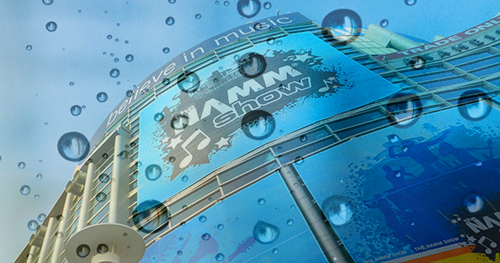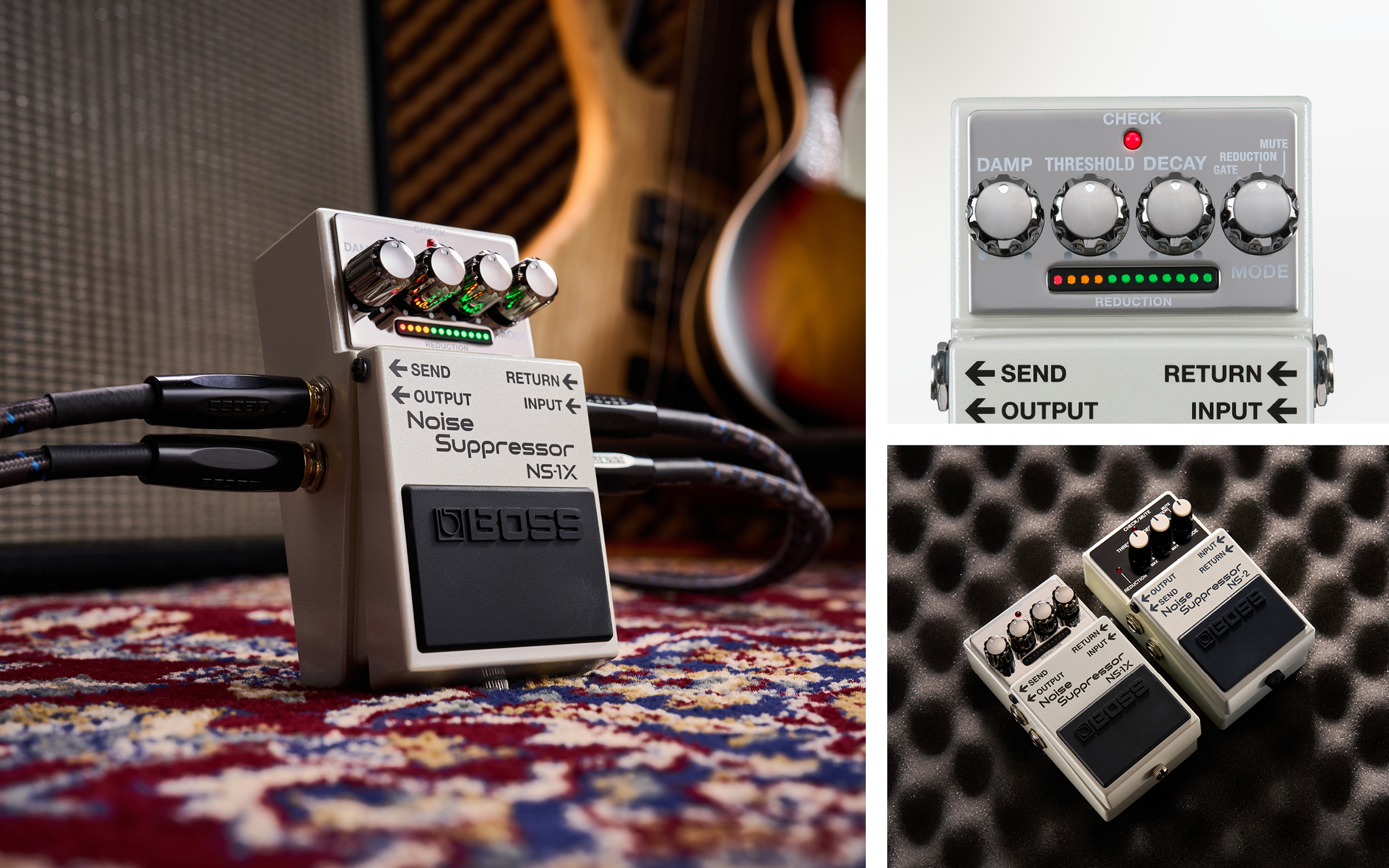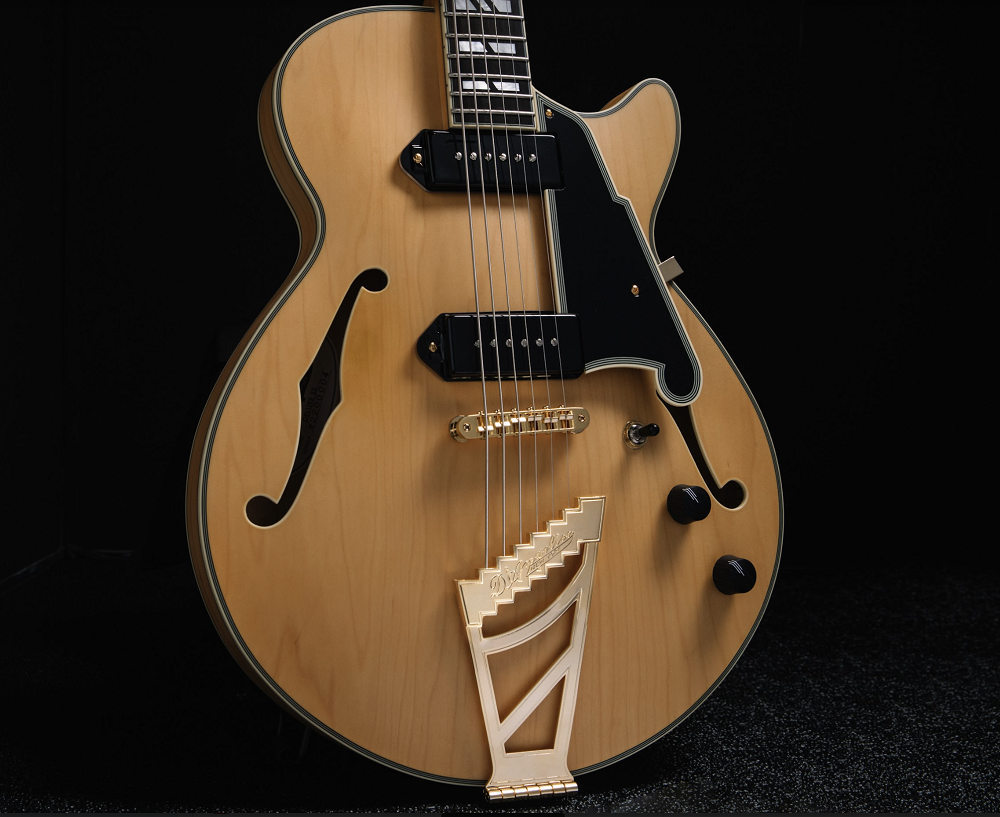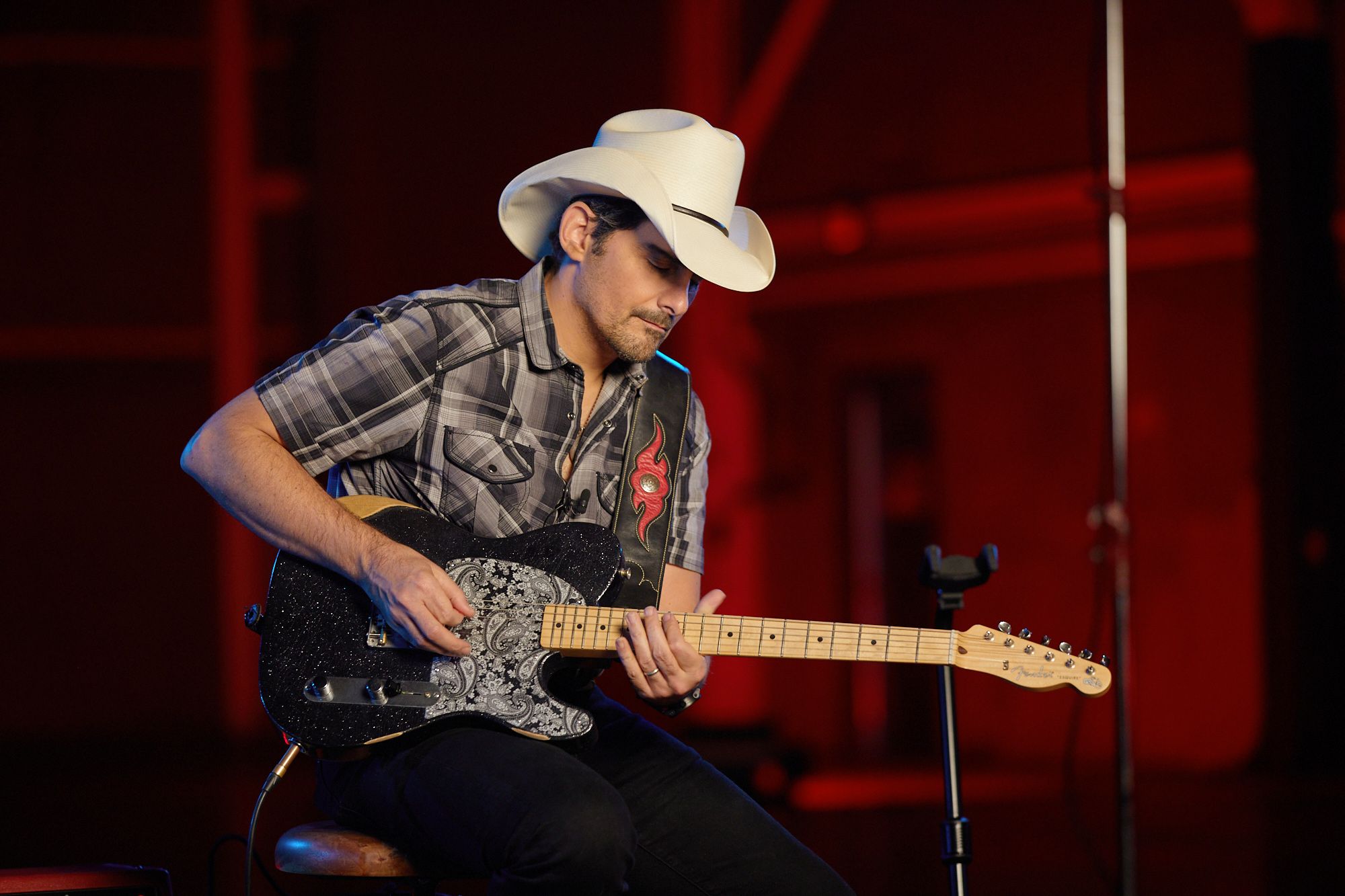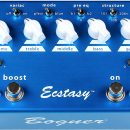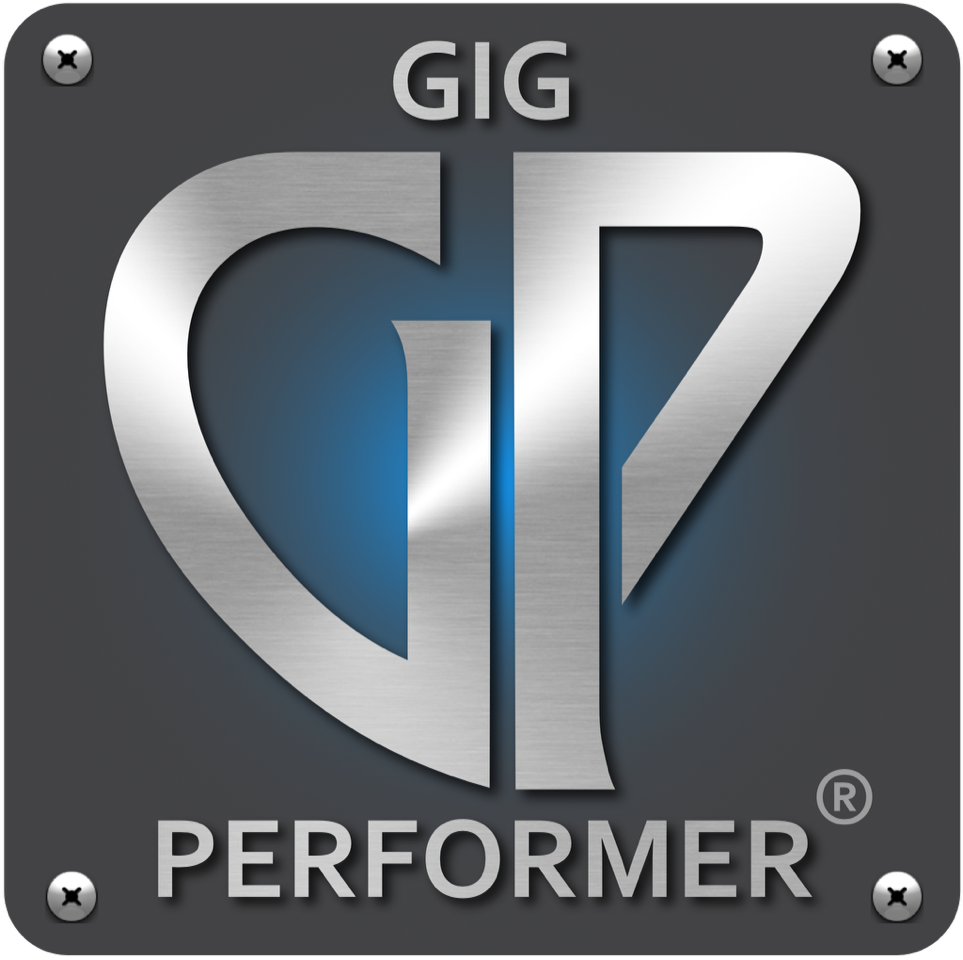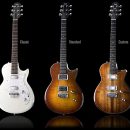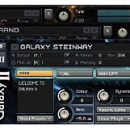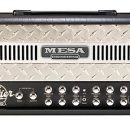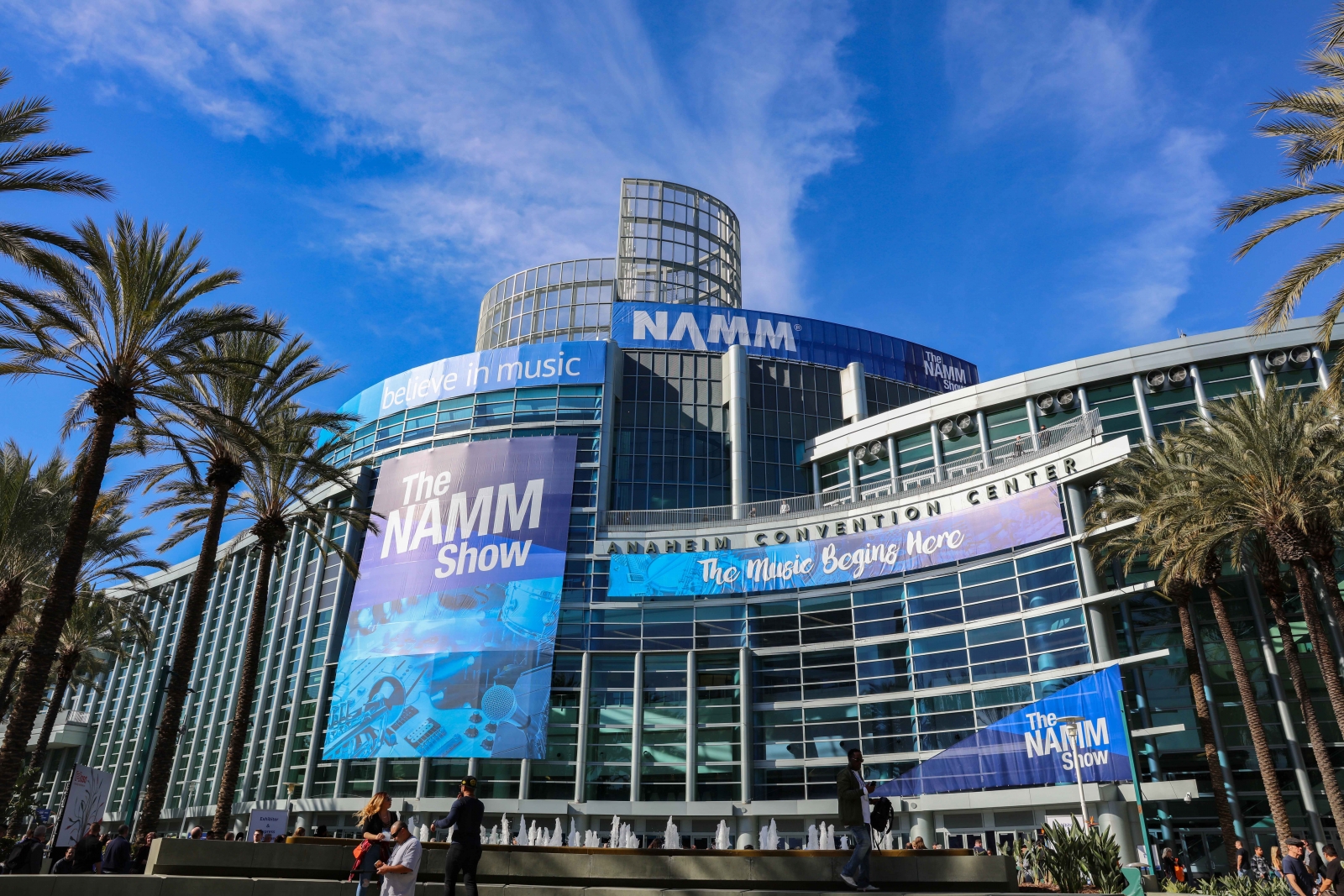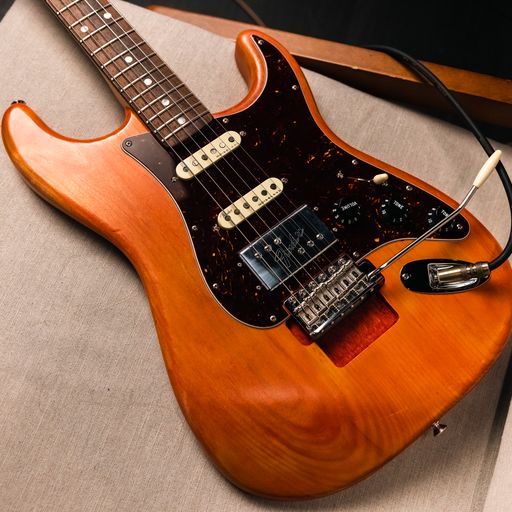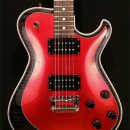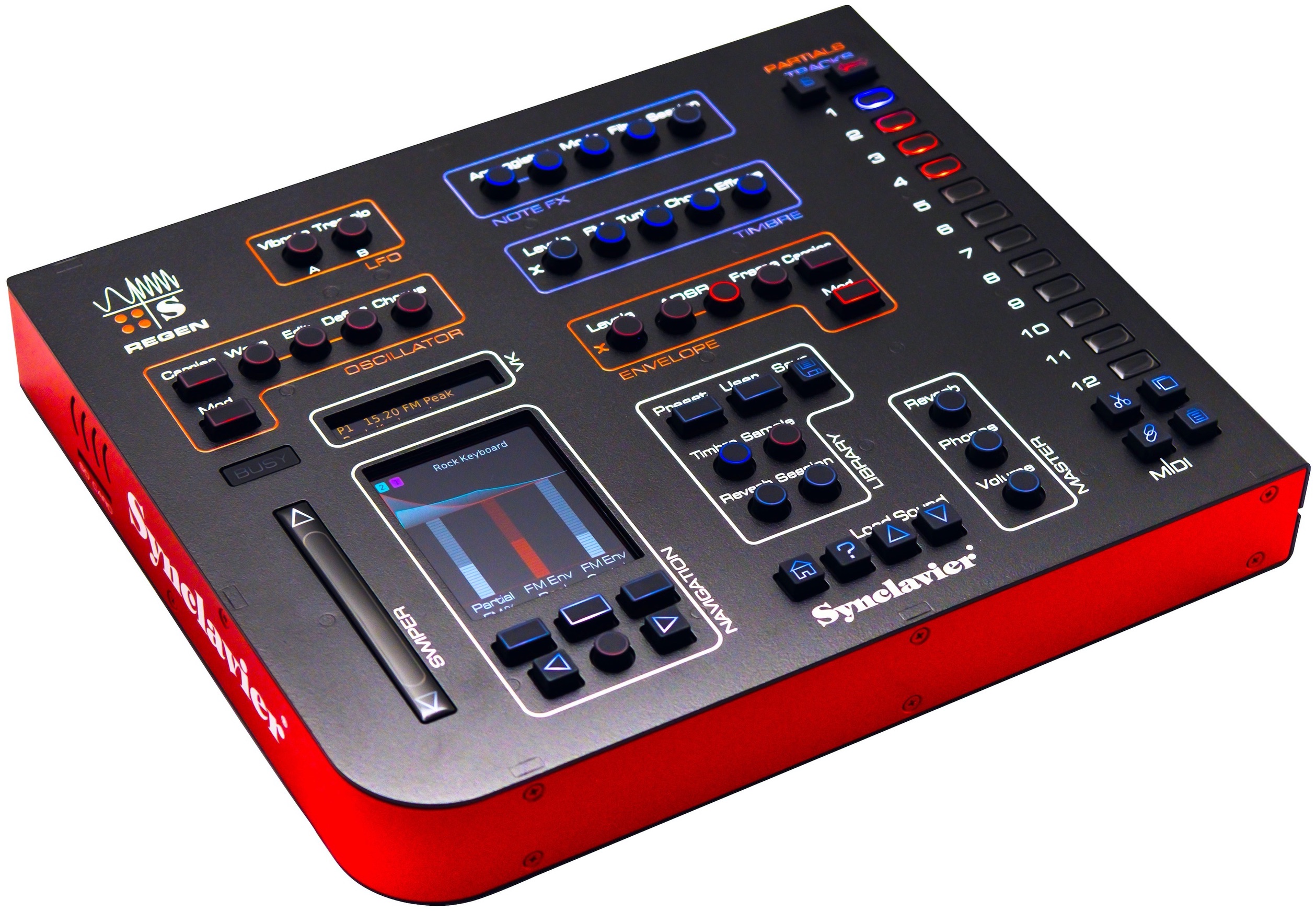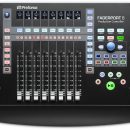Accel Audio
Accel’s FX Series Command Center is a great all-in-one pedalboard solution for players assembling pro-class rigs. And audio looper/function switcher with eight loops is integrated into the front of the aluminum pedalboard, with all connections running underneath the board instead of wasting space on deck. Use an Accel Audio power supply or install your favorite underneath, and enjoy the premium, bundled, patch cables in assorted sizes to get you up and running fast.
—SK

BOSS
The new BOSS Acoustic Singer Pro was one of those “game changing” amps that impressed even the boutique tube amp snobs among us. As its name implies, the amp features two independent channels, enabling an acoustic guitar-playing singer to plug both a guitar and vocal source. What’s special in this case, however, is that the amp analyzes the player’s guitar chords and can provide instant harmonization to the vocal performance! Add in a looper and a healthy complement of effects, and you’ll be a one-man band in no time.

The BOSS CP-1X Compressor pedal will be a welcome addition to many players’ pedalboards. It’s a digital, multiband compressor, providing more nuanced compression without muddying up tone like a classic, single-band, analog compressor, but it retains a familiar, easy-to-use interface. And for those of you who can’t get enough Jazz Chorus in your lives, the new JC-22 is a compact, 30-watt version of the year-old JC-40 amp with a pair of diminutive 6.5” speakers in a smaller, but similarly functional, package.
—BS & SK


Breedlove
Breedlove introduced their new Concerto body shape, and on display were the Exotic Amazon and Masterclass Brazilian models, which really caught our eyes and ears. The company builds guitars with what they call sound profiling, meaning each instrument’s wood is analyzed for its resonant properties and then is hand sanded and fine tuned to precise top thickness until target resonant frequencies are achieved in order to achieve consistency from one build to the next. The use of Brazilian rosewood, Cocobola, and other gorgeous tonewoods helped achieve a bell like sparkle when we played them… and we could hear this without taking an instrument into an enclosed sound booth.
We were definitely surprised by the Purist Parlor Mahogany. With a paltry $665 MSRP, we played a surprisingly professional-grade acoustic! Indian rosewood fingerboard, mahogany neck, back, and sides all yielded a pleasurably brighter and louder guitar than we anticipated. This is one acoustic guitar builder who seems to keep getting better every time we see them. Look for a review of something spicy from these old hippies very soon.
—BS

Charvel
Calling all shredding southpaws! It was exciting to see the latest Charvel Pro-Mod San Dimas Style 1 and So-Cal Style 1 guitars available in left-handed models. Taking a page from the EVH guitars, these offer graphite-reinforced, compound radius necks (12-16”), Floyd Rose trems, and a few of their own treatments such as the Seymour Duncan JB/’59 humbucker set in the San Dimas and Seymour Duncan TB-6/SH-6N in the So-Cal.
—SK

D’Angelico Guitars
D’Angelico Guitars, New York City’s flagship archtop brand, showed off their new Bob Weir SS guitar. With a vintage-style Bigsby trem, it’s a sleek and elegant addition to the SS line. The guitar features dual humbucking pickups, push/pull knobs for coil tapping, a bound fretboard, and a rosewood neck.
We also saw a pair of custom painted guitars with iconic pics of Marilyn Monroe and Elvis. Using american ‘50s icons was a nice nod to the D’Angelico art deco design. We are not typically sceptics, but we eye-witnessed an Elvis guitar fall off a stand all by itself, where the guitar was well out of reach from attendees. Elvis has left the building.
—BS

Digitech
Keeping the DOD name more alive and well than it’s ever been, Digitech released a fantastic, new, twin-button delay pedal called Rubberneck. It features over one full second of pure analog delay, which by itself is not anything new, but it can also pitch shift up to an octave from one time setting to the next in real time! Also featuring its own effects send and return, as well as a footswitch jack, allows for this unique delay pedal to be incorporated into complex rigs.
Another extremely useful and cool pedal Digitech released was the FreqOut: a feedback pedal that works! We saw and heard right before our eyes and ears, very natural sounding feedback, even when playing single notes on an amp’s clean setting. We nearly freaked out over this.
—BS

EBS
What’s a premium Swedish bass amp and bass effects pedal builder doing in our guitar report? Introducing their Blue Label Pedals, a trio of analog overdrive pedals developed for use by guitar players (and bassists, too). Black Haze, Drive Me Crazy, and The Drive offer various differences when it comes to providing just the right overdrive, and we just received them for a full, in-depth, comparative review.
Also cool were a series of flat jumper cables for your pedalboard. Available in various lengths, these premium cables for interconnecting your pedals are right angled, with very flat ends and flat cable. Even better, the Blue Label Pedals each include one of these, so you can see how cool they are right away.
—SK
.jpg)
ENGL
We were very excited to check out the hot, new Inferno E766, otherwise known as ENGL’s new Marty Friedman signature amp. This two-channel, fire-breathing, 100W, metal machine is built around four EL-34 tubes and features two channels with independent EQ, a gain boost on each, noise gate, series/parallel effects loop, and a second master volume switchable from a footswitch.
—SK

Eventide
Building on the wildly popular and fantastic sounding H9 (review here), Eventide unveiled a new algorithm; Pitchfuzz. Combining pitch, delay and fuzz-type distortion, we were able to hear some pretty interesting combinations further expanding the H9’s already vast sonic palette. Pitchfuzz delivers three voices (non intelligent) which can be routed before or after the fuzz and delay.
—BS

EVH
The EVH Wolfgang USA signature guitar was released in an array of finishes, and follows with a feature set we’ve come to expect from the line. We are particularly fond of the EVH-branded Floyd Rose bridge (equipped with a D-Tuna) and the compound radius (12-16”), graphite-reinforced, neck with its hand-rubbed finish. The feel of this one is slick and fast! Other features include a red kill switch (allowing for Eddie’s typical stutter effect) and custom-wound EVH alnico pickups (the neck pickup is new for 2017). Ok EVH. Ya’ really got us now.

Continuing on with the lunchbox amp craze, EVH showed off its 5150III LBXII. The amp is a 2xEL84 and and 4x12AX7 package. In this second version of the 15 Watt, two-channel amp, we love how it can be dialed down all the way to 3.5 watts. Supplied with a single-button footswitch, the amp can jump from pristine clean to rich overdrive that sustains wonderfully.
—BS


Fender
American Professional. The familiar American Standard line has been retired (somewhat) in favor of this new line, and we think it’s about time as well. Borrowing some bits here and there from the fantastic Fender Elite series instruments (see our review here), the new American Professional line guitars have improvements all over: upgraded bridges (the Tele has a redesigned bridge with three compensated, brass barrel saddles), new V-Mod single coil pickups designed by pickup guru, Tim Shaw, a new modern “Deep C” neck profile, narrow-tall frets, treble-bleed circuit (to preserve high-end frequencies when rolling off the volume), and more.

There were plenty of new amps, too. After drooling over the custom shop’s latest reproduction of the legendary ‘

57 series of amps, we finally have one of these beauties in the studio for review. All of the nuances have been faithfully recreated right down to the vintage yellow capacitors and Schumacher transformers as featured in the original 5E5A circuit. We were also impressed by Fender’s latest acoustic amp line. The Acoustic 100 and Acoustic 200 amps are housed in gorgeous wood cabinets and feature modern amplifier and small speaker array designs. Expect a full review soon.
—SK
Friedman
Building on Friedman’s successful line of stomp boxes, Friedman released two more pedals aptly named after their amps. The Buxom Boost and the Dirty Shirley Drive were featured and upon listening, they got us scary close to their inspirational amps’ sounds.
Also new for Friedman was the introduction of a new, high end, single-cut electric guitar: the Metro D. Surprisingly light for a maple-on-mahogany, non-chambered instrument, it played wonderfully. Hmmm… making amps, pedals, and now, instruments? Could this be the start of the next Fender?
—BS
Fryette Amplification
Fryette introduced the Valvulator GP/Di Direct Recording Amplifier, a tabletop, 1 Watt, tube amp with integrated load. It has dual cascading gain stages, Sag control, cabinet and mike simulation, and a speaker output that can drive a 1x12” cabinet. Fryette mentions four dual triode tubes, though we’re not exactly sure what type of tubes they are.
—SK

Hughes & Kettner
When we reviewed the Grandmeister 36 (review here), we were impressed with the stunning array of features packed into a compact, low-wattage guitar amp, and the sound was good, though nothing to specifically rave about to our discerning guitar audience. Then, along came the Hughes & Kettner flagship amp, the TriAmp Mark 3, which has spectacular tone, and a killer feature set (review here). Thus, we were excited to learn all about the new Grandmeister 40, because something good has been made better.
We spoke with one of the product managers, who explained that after the design of the TriAmp Mark 3, the engineers were so in love with the new preamp designs that they decided to revisit the Grandmeister and completely replace the preamp circuits with new ones based on the TriAmp. We’ll be getting one in the studio for review soon, and can’t wait to hear (away from the NAMM convention noise) just how much this capable little amp has been improved.
—SK

Ibanez
Ibanez has long featured guitar virtuoso, Steve Vai, as its ambassador, and his signature guitar, the Jem, is enjoying its 25th anniversary this year. Reissued in three original colors (Lochness Green, Desert Yellow and Shocking pink), these guitars are guaranteed to make players and fans reminisce about the times when fast guitars and big hair ruled the guitar landscape (and the airwaves). These aren’t exact reproductions, but the subtle differences such as the five-piece neck (originals were just one-piece) are sure to add value to this line.

Also worth noting in the signature guitar lineup were two new Paul Stanley guitars, the PS120L and the PSM10. The PS120L is loaded with Seymour Duncan pickups and a fixed Fulltone III bridge, and is sure to be an excellent hard rock guitar with or without face paint.

Expanding on the premium line, we loved the RG1070 is now available in a striking charcoal black burst and cerulean blue burst finishes. These guitars come loaded with three DiMarzio pickups and the tried and true Edge Zero II trem. Across numerous hot looking, new RG- and S-series guitars from the Prestige and Premium lines, we noticed that the popular pickup choices are classic favorites of ours: DiMarzio Tone Zone in the bridge, and Air Norton in the neck position, with a variety of options on middle-pickup equipped instruments. Shred!!!
—BS

Jackson
Jackson released a number of new models in the Soloist and Dinky lines, as well as new signature models from Phil Collen, Gus G., Marty Friedman, and Misha Mansoor. Picking one favorite would be tough, but Phil Collen’s latest revisions are pretty sweet: The USA Signature Phil Collen PC1 Matte and Satin models have mahogany bodies, bolt-on, two-piece quartersawn, carmelized, flamed maple necks with maple fingerboards and a hand-rubbed urethane gel treatment, compound neck radius (this 12-16” radius thing appears to be the popular norm across the Jackson/Charvel/EVH range), 24 jumbo frets, DiMarzio pickups in an HSS configuration: DP-152-F (bridge), HS-2 DP116 (middle), and PC1 Sustainer Driver (neck), and a Floyd Rose Original tremolo. We especially loved the vibe of the cool satin finishes, blacked-out hardware, and fretboards without markers.
—SK

Mark Kendrick Design
Mark Kendrick has been in the music industry for over forty years as a player and builder. His signature pickups are the result of having a definitive taste in mind: a sonic difference from that of a Strat pickup, which he found to be a bit too much on the bright side. He was looking for something with more body and depth while maintaining the compression characteristics of early ‘60s pickups. Through searching raw material resources, trying different wire and magnet combinations along with a calibrated wind for each pickup position, he’s arrived at a pickup that really adds its own voice to the mix.
Mark’s other product line includes the Advancing Drive Pedal. Each pedal is hand built by Mark to ensure they meet his every demand for both design and sonic ability. As he states, “My intention was to build a solid, old school piece.” The pedal can be used as a buffer, drive, boost, and even visit the realms of compression and distortion. Each pedal is also hand painted by Mark, adding that personal touch and creative expression.
—DD

Kiesel Guitars
Kiesel Guitars had a variety of new instruments on display. Many were familiar models sporting gorgeous, multicolored flamed and quilted top finishes (with multiple bindings) that have been featured prominently in the line—and which are being emulated by many other builders these days. The latest model to catch our eyes was the Vanquish KV6C, a 25.5” scale, solidbody electric with a unique, Strat-that’s-been-squished body paired with a Holdsworth-esque headstock. The range of customization options are extensive as with all Kiesel instruments (you can even order this with a multi-scale neck), and we plan to get one of these guitars in for review soon.
—SK
Video courtesy of MusicPlayers.com
King Blossom Guitars
King Blossom Guitars were showing an interesting hollow-body guitar, the model 1M. You can’t see this particular detail from a photo, but with sound slits on the inside of the horns of the DC instrument, this was definitely different. The mahogany-on-maple build was nice and light but still yielded a nice tone, in part thanks to David Allen Dirty Cats pickups. The guitar also featured a birdseye maple neck, and the product line showed some beautiful pieces of wood. The six-way toggle was also something different, providing a variety of tonal options for split-coil and humbucking pickup configurations.
—BS

KSR Amplification
Our pal, Kyle Rhodes, has rebranded Rhodes Amplification as KSR, with styling as hot as the modern amps he has been designing for years. We were excited to see the new Orthos Mk. II combo (his first combo), which puts one of his versatile, two-channel amps into a 2x12 combo configuration, with cleverly applied weight relief and Celestion Neo Creamback speakers. Getting monstrous KSR tone from a 2x12 combo, all-tube amp that weighs under 75 pounds is a beautiful thing indeed. If demand ever lets up for just a minute, we might actually get one of Kyle’s amps in for a formal product review.
—SK
Video courtesy of MusicPlayers.com
C.F Martin
C.F Martin celebrated 2,000,000 guitars made since 1833. The Two Millionth guitar, as with most of their custom designs, contains some very elaborate inlay work. Much of the same design can be found in the D-200 Deluxe Limited Edition guitar. The dreadnought guitar sports a highly figured Bearclaw Engelmann Spruce top, Brazilian back and sides, and fourteen frets.

Also new to the signature line are the Dwight Yoakam DD28 and the D-28 John Prine Dreadnought guitars. Another new product that caught our eye was the OMC-16E, a fourteen-fret, cutaway Orchestra model. Through the RainForest Alliance Certified and FSC initiative, the guitar contains an FSC-certified, Sitka Spruce top with FSC-certified, Cherry back and sides.
—DD

Metropoulos
No stranger to building fantastic sounding, early British-sounding amps, Metropoulos revealed their new 100 Watt Superplex. This amp had a bit less less gain on tap than their Metroplex flagship, but boy did it ROCK! We felt it copped the perfect Hendrix/Cream tone! Variac switch, footswitchable boost and mode options (tonal changes for the mode button), as well as a bypassable effects loop, make this the classic rock Plexi crusher we’ve always dreamed of. Built on the 66 45/100 platform, the amp features kt66 tubes. Keep your eyes open for a spring launch.
—BS

 Mezzabarba
Mezzabarba
Mezzabarba was one of the true gems in Hall E this year (Hall E is where all the cool kids hang out). They brought a full compliment of their line, and the amp that really grabbed our ear was the MZero Overdrive. This two-channel, 100 Watt, EL-34 amp had a striking aesthetic, featuring two huge, no-nonsense, red transformers begging to be played staring you in the face. The amp sounded as good as it looked. The clean channel allows for a pristine clean but also offers a switchable boost. The overdrive channel was pure, hot-rodded, Marshall-like bliss, and we’ve just received one in the studio for testing. Full report coming soon!
—BS

Neunaber Audio Effects
Brian Neunaber was at it again, this time applying his expertise in amplifier design to the Iconoclast, a pedal-based speaker cabinet simulator designed to go at the end of your pedalboard chain and provide a simulated, direct output for live sound or recording. It provides a broad pallette of cabinet tone-shaping options, and a headphone jack, too!
—SK
![]()
John Page Classic Guitars
John Page, formerly one of the Fender Custom Shop co-founders, is gaining great attention from his Ashburn model guitar, a guitar intended to be “Uniquely Familiar.” As expected from a custom built boutique guitar, it's comprised of a double cutaway body with C shaped, threaded bolt neck with contoured heel, staggered tuners, bass side fret markers, and his signature Bloodline pickups (JP-1 single coil S-style pickups). New models include the Ashburn HHS, Ashburn Special, and the AL Special.
—DD

 Peavey
Peavey
Peavey introduced the new invective .120 head and invective .212 speaker cabinet. The sharp looking amp was designed with input from Periphery’s Misha Mansoor, and it features four matched JJ6l6GC tubes, three channels, two effects loops, cabinet simulated direct output over XLR, and similar characteristics to the 6505 head other than the new clean channel, which is voiced to be pristine clean. The amp has built-in MIDI control and memory for storing multiple presets, too! Expect a review as soon as it ships.
—SK

 RainSong
RainSong
We’ve been reviewing guitars made from non-wood materials for years, but we were never sufficiently moved by non-wood acoustic guitars to pay much attention to them. A funny thing happened over the years, though… they got better! And this year, playing a few different RainSong acoustic guitars made from carbon fiber, we were genuinely impressed with the tone. These sounded like high-quality acoustic guitars, and the numerous admirable qualities of carbon fiber make it a great choice for building pricey acoustic instruments. How nice to not have to stress over humidity control in your studio or in your guitar hard case all the time!
One very cool innovation was that RainSong found a way to cut sheets of carbon with uniform grain structure that looks more like a wood top (albeit in a grey color) than the quilted patchwork that typifies products made from carbon fiber. They call it unidirectional, and claim that it mimics the tight grain structure of spruce. The Concert-series instruments in particular sounded rich and warm.
We are looking forward to formally reviewing some RainSong guitars this year. And we’ll say it right now, for those of you who haven’t experienced one of these guitars personally: they don’t sound like hollow, plastic-backed fish bowls!
—SK

Strymon
Strymon, best known for its spacey, lush, time-based effects, unveiled a new drive pedal, the Riverside. Packed with interesting features such as an infinite sweet spot, this tailors several parameters under the hood as gain is increased. Input jacks allow for expression pedal control of any of the pedal’s parameters (or simply volume control), and a boost jack allows for a switch to boost your signal. The Level and Drive knobs also offer secondary functions like boost level and noise reduction. The Riverside merges attributes of both analog circuitry as well as DSP with a refreshing, new approach to drive pedals.
—BS

Suhr Guitars
We were thrilled to see Suhr return to the NAMM Show this year, as it offers a great opportunity to check out so many of their fantastic electric guitars, amps, pickups, and pedals. The A.C.E (or Acoustic Cabinet Emulator) is a new stomp-sized box introduced by Suhr, and its name is pretty self explanatory. This cabinet output emulator provides basic tone shaping with sub, high, and presence controls, as well as including toggles for phase, ground lift, and bypass. It has two balanced outs (both XLR and TRS) and an input attenuator to assure proper levels in and out of the box.
Video courtesy of MusicPlayers.com

We were also excited to see Suhr proudly giving center stage to a new offset guitar body shape, the Classic JM Pro. Offered in many hardware and color combinations, the JM Pro looked and felt every bit a Suhr, and seemed to be a logical style progression in the Suhr guitar family. If you hated the shorter scale offsets of the ‘60s but otherwise enjoyed their vibe, no worries here. These guitars feature a 25.5” scale and all the modern appointments we’ve come to appreciate on Suhr instruments, like locking tuners and single-coil noise-cancellation technology.
—BS

Two Notes Audio Engineering
The masters of cabinet simulation were at it again, this time introducing the Torpedo Captor, an easy-to-use reactive load box. Very straightforward in operation, just plug the appropriate version in-line between your amp and your speaker cabinet and you can activate a -20dB attenuation of the output volume to listen to your pushed amp at reasonable volume levels. The built-in DI lets you connect to your studio gear or house PA system for direct recording or cabinet simulated live sound (switchable for guitar or bass). Just add the free, included Wall of Sound III plug-in to your DAW for a choice of cabinet and mic models when tracking direct. Torpedo Captor handles up to 100W, and there are three models to choose from: 4ohms, 8ohms, and 16ohms. At only $229, it’s a lot less expensive than the full-featured Torpedo Reload and Torpedo Live.
—SK

Ultimate Support
You might think that the world has enough pedalboard options, but along comes Ultimate Support, a bit late to the party, but packing exciting new beverages! Introduced were the Genesis Series pedalboards, which offer a few features that are truly innovative! Ultimate started with a pedalboard in the familiar style of a PedalTrain, but then made a few cool changes. First, they integrated a microphone stand base into the top row of the board. For players who struggle with mic boom stands that are too far away once their pedalboards are in place, this is a really great feature, and you can slide the mic base anywhere along the top set of slats.
Things get more interesting underneath the board. There’s a universal power supply mount, which accommodates any size/shaped power supply without the need for screws or drilling. And finally, cable management! We’re surprised it took so long for someone to come up with a straightforward way of managing cables underneath, but integrated cable management clips slide along rails underneath the pedalboard. Nice!
—SK

Voodoo Lab
Although the Dingbat pedalboards can be purchased completely blank and ready for you to add your favorite Voodoo Lab power supply and effects, we especially loved the Voodoo Lab Dingbat PX, which has an integrated Voodoo Lab PX-8 Plus audio looper/switcher attached to the front, providing quick access to pedal loop presets without wasting any space on your pedalboard for the looping system—all wiring takes place underneath the board.
—SK

Video courtesy of MusicPlayers.com

